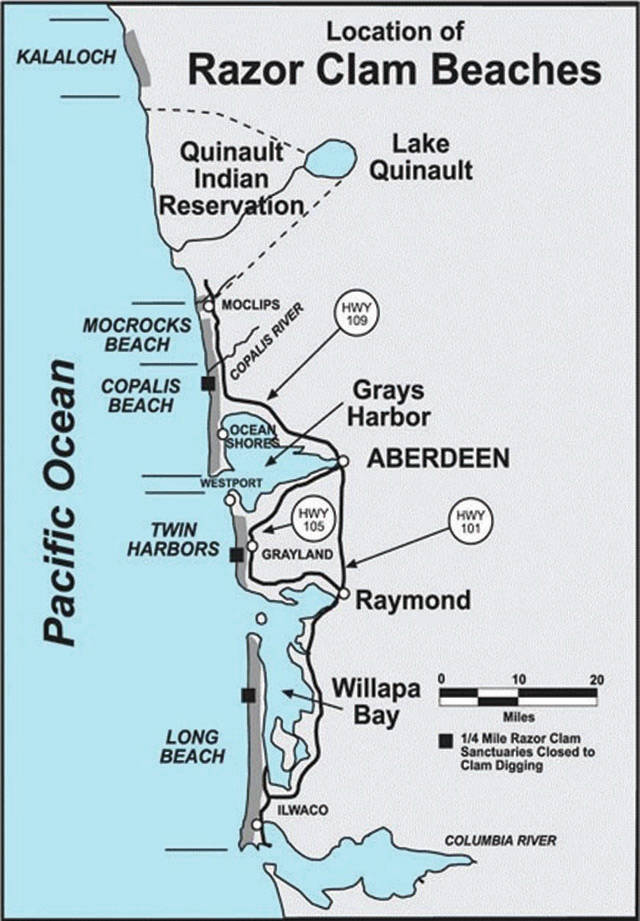Once again only Mocrocks and Copalis beaches will be open for razor clam digging, while south beaches Long Beach and Twin Harbors remain closed.
The beaches are open on alternating days. Mocrocks is open Thursday morning, with an 8:58 a.m. low tide of -0.6 feet. Copalis opens Friday morning for a 9:47 a.m. low tide of -0.6 feet. Then it’s Mocrocks again with a 10:40 a.m. low tide of -0.5 feet, and the dig wraps up with a -0.1-foot low tide at 11:39 a.m. at Copalis.
The Washington Department of Fish and Wildlife approved the four-day dig — the first dig of the season on morning tides — after marine toxin tests showed that clams on those two beaches are safe to eat.
Dan Ayres, state coastal shellfish manager, said Long Beach and Twin Harbors remain closed to digging, because they have not yet met state testing requirements for marine toxins.
All state fishing licenses expire March 31, so diggers will need to purchase a 2017-18 fishing license if they plan to participate in the digs approved for Saturday, April 1, and Sunday, April 2.
Licenses applicable to digging razor clams include an annual razor clam license, a shellfish license or a combination fishing license. A three-day razor clam license is also available, although it is restricted to digging days in a single licensing year.
All licenses are available online at https://fishhunt.dfw.wa.gov/ and from sporting goods stores and other licensing outlets throughout the state.
Copalis Beach extends from the Grays Harbor north jetty to the Copalis River and includes the Ocean Shores, Oyhut, Ocean City and Copalis areas.
Mocrocks Beach extends from the Copalis River to the southern boundary of the Quinault Reservation near the Moclips River, including Iron Springs, Roosevelt Beach, Seabrook, Pacific Beach and Moclips.
South beaches
According to Ayres, the most recent set of Long Beach marine toxin results have one of four areas testing above the action level, which is 20 parts per million. Two new sets of razor clam samples at least one week apart will need to be collected from Long Beach with all testing below the action level before the state can re-open this beach.
The news is more promising for Twin Harbors, where all four test areas sampled came back below the action level for marine toxins. All beaches will be retested April 2, and if all the Twin Harbors test areas come back below 20 parts per million, Ayres said Twin Harbors will be open for digging as soon as possible.



